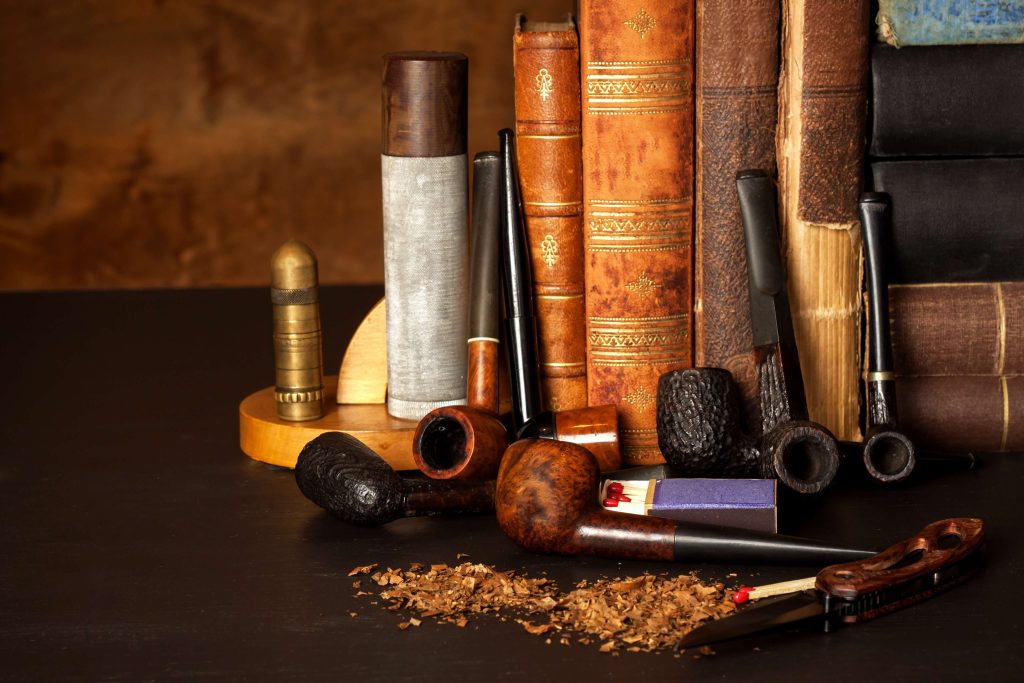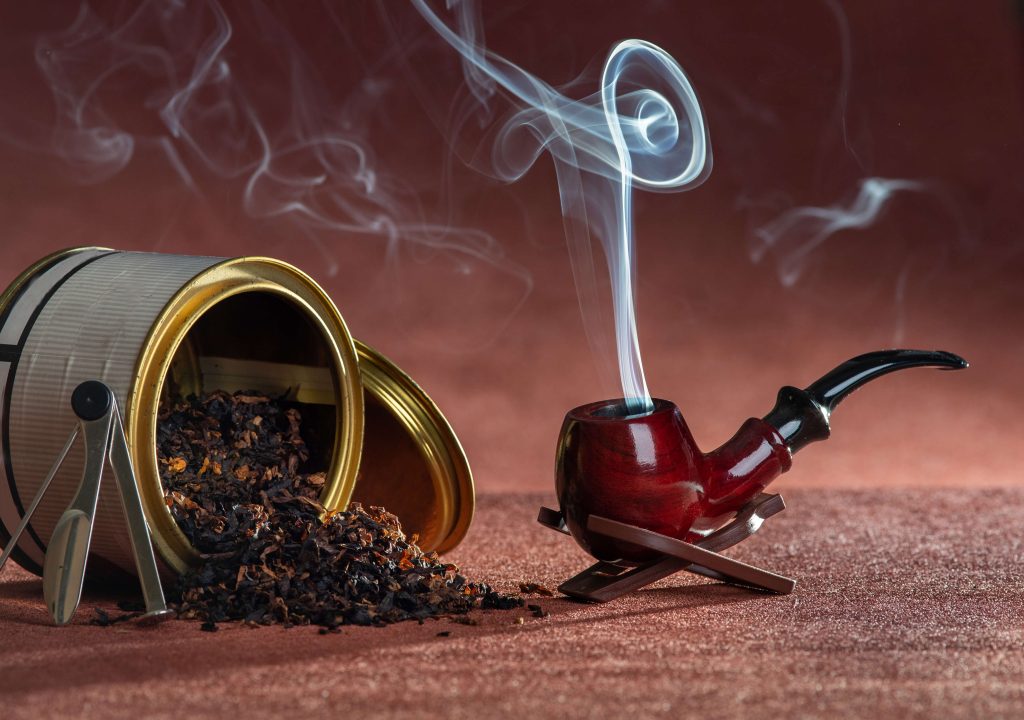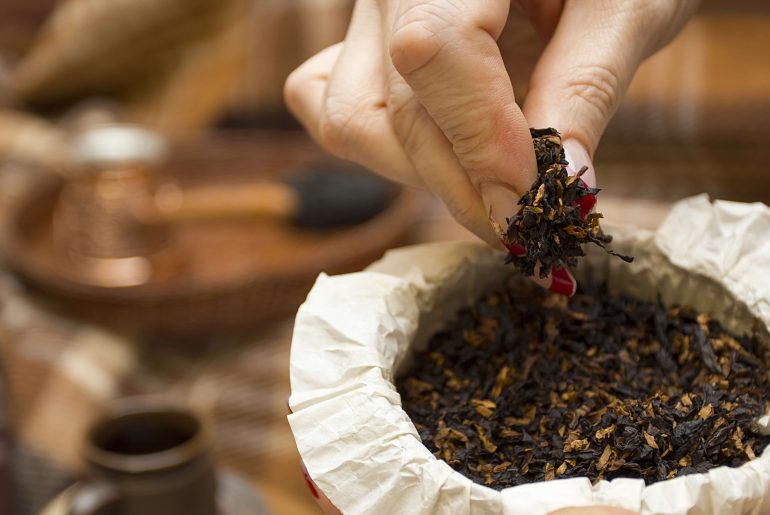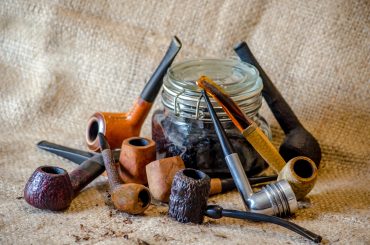As the name suggests, Balkan blends find their roots in the Balkans. The region in Southeastern Europe is steeped in tobacco cultivation history. It was here that the foundation for these exquisite blends was laid, and their allure began to take shape. Their distinctive composition sets Balkan blends apart — a careful marriage of Oriental tobaccos and Latakia. Sometimes, blenders will include a touch of Virginia or Burley, too. Balkan blends are a symphony of flavors tantalizing the senses and bewitching the palate with its unique taste and aroma.
Come along on a journey of discovery and unravel why Balkan mixtures are so enticing in the sensory pleasures they offer.
The Origins Balkan Blends
Before diving into the captivating world of Balkan blends, it’s crucial to trace their roots and understand how they earned their distinctive moniker. As the name suggests, Balkan blends hail from the Balkans, a region in Southeastern Europe with a rich tobacco cultivation history. But there’s also Sobranie’s Balkan Blend, which we’ll look at further down.
What truly sets Balkan blends apart is their unique composition, typically comprising various Oriental blends, tobaccos, Latakia, and occasionally a touch of Virginia or Burley. The artistry behind these blends lies in achieving the perfect balance between these components and the blender’s skill.
Demystifying the Components

To fully appreciate the magic of Balkan blends, let’s break down the pivotal elements that make them such an irresistible and enigmatic choice:
1. Oriental Tobaccos: At the core of Balkan blends are Oriental leaves, often referred to as Turkish tobacco. The leaf blenders may include Cavalla, Samsun, Izmir, and Zanthi (ranging from largest to smallest). They bring a unique aroma and taste, distinguishing Balkan blends from other tobacco mixtures.
2. Latakia: The most defining element of Balkan blends is Latakia, a fire-cured tobacco sourced from Syria or Cyprus. The leaves are cured over smoky fires, resulting in a rich and smoky flavor. Latakia’s presence adds depth and complexity to the blend. But blenders also have to be careful not to overwhelm the other mild-flavored (Oriental) tobaccos — a little Latakia goes a long way.
3. Virginia and Burley: While not universally present in Balkan blends, some variations incorporate Virginia or Burley tobacco to add sweetness and body to the mixture. These foundational components provide the canvas on which the Oriental and Latakia components can express their full glory.
The Balkan Blend Experience: A Sensory Journey

The journey of enjoying a Balkan blend begins the moment you unseal the tin. The initial fragrance is often described as enchanting — a mixture of smokiness, spiciness, and a subtle sweetness that hints at the delights awaiting your palate.
Upon ignition, the initial draws bring forth flavors that dance across your taste buds. Oriental tobaccos contribute zestiness and a hint of tang, while the smokiness of Latakia weaves in and out of the blend.
To be noticed is the room note of Balkan blends. Unlike sweeter tobacco blends that produce pleasant aromas for those in your vicinity, Balkan blends tend to yield a room note that is an acquired taste. The room note may appeal to some, and you should exercise caution when smoking a Balkan blend around those unfamiliar with its aroma.
The Historical Significance of Balkan Blends
The term “Balkan blend” carries a rich history, and its usage has evolved. Initially, it referred to a style of tobacco blending that originated in the Balkans. But, in contemporary usage, it often signifies blends featuring Latakia. A quick side note: English blends also contain Latakia. We’ll look at the difference between Balkan and English blends further down.
One of the most legendary Balkan blends is the “Balkan Sobranie.” But these days, finding a tin of the famed mixture is almost impossible. The Sobranie Company, based in London, once produced the renowned blend. It is also possible that the term Balkan was coined among pipe smokers as the ‘original’ Balkan blend. The blend was celebrated for its exquisite balance between Latakia and Oriental tobaccos. It certainly left an indelible mark on the world of smoking!
The term Balkan in the context of tobacco blends is often associated with Balkan Sobranie. But its origin can be traced back to the Balkans, a region in Southeast Europe where Oriental tobaccos are cultivated. While the term “Balkans” accurately identifies this area, trying to define the Balkans in a geographical sense can be as challenging as describing Balkan blends themselves.
The Balkans, situated like a quasi-peninsula, acquired its name in the early 1800s from a mountain range in the Republic of Bulgaria. The region can be roughly defined by its borders as the:
- Adriatic Sea to the west
- Ionian Sea to the south
- Aegean and Black Seas to the east, and
- The northern boundary is vague and consists of various rivers, including the Danube.
The Balkan states encompass Albania, Bulgaria, Greece, Herzegovina, Kosovo, Montenegro, North Macedonia, Romania, and Turkey. Some political definitions exclude certain nations. Unfortunately, the region has a history of constant turmoil due to competing economic, cultural, military, and religious factions. Considering these factors, Latakia and Oriental tobacco supplies are unpredictable due to the inherent instability in the Balkans.
Characteristics of Balkan Blends
The main characteristics of Balkan blends are their rich, smoky flavor and complex aroma. The smoky flavor is due to Latakia tobacco, grown in the Middle East, and its natural smoky flavor. The sweet and spicy flavors are due to the use of Oriental tobacco grown in the Balkans and Turkey.
Balkan blends are typically full-flavored and robust, not for the faint of heart. Yet, they can be very rewarding to smoke and offer a wide range of flavors and aromas to explore.
Types of Balkan Blends
Balkan blends can vary widely in terms of composition. But some of the most common types of Balkan blends include:
- Traditional Balkan blends are characterized by their high percentage of Latakia tobacco. They typically have a robust and smoky flavor with hints of sweetness and spices like cardamom.
- Oriental-heavy Balkan blends have a higher rate of Oriental tobacco than traditional Balkan blends. They typically have a sweeter, spicier flavor with less smoke.
- Virginia-heavy Balkan blends have more Virginia tobacco than traditional Balkan blends. They usually have a milder, sweeter taste with less smoke. Red and Bright Virginia tobacco also adds nicotine to the mix.
- Burley-heavy Balkan blends: These blends have more Burley tobacco than conventional. They typically have a more earthy, nutty flavor with less smoke.
Balkan Tobacco Taste Notes
Balkan blends won’t be your go-to choice for a solid nicotine hit. Oriental tobaccos do not pack a strong punch regarding raw strength but engage your senses differently. When you smoke them, they have a more noticeable impact on your sinuses and sense of smell than on your taste buds.
When blenders use Balkan and Oriental tobacco, the soloists expect an underlying sweetness. You might also experience subtle nutty notes to the middle and back of your tongue.
These intriguing tobaccos carry flavors reminiscent of green tea, lemon, and cardamom. You’ll find that many of these flavors seem to come to life in your sinuses, creating a unique sensory experience.
How to Choose a Balkan Blend
If you are new to Balkan blends, choosing a mix that is right for you is essential. If you are not sure where to start, here are a few things to consider:
- Your experience level: Starting with a mild blend is best if you are new to Balkan blends. Peterson Balkan Supreme is a beautiful introduction to the world of Balkan blends.
- Your taste preferences: Try a traditional Balkan blend if you like solid and smoky tobaccos. Milder options include Oriental-heavy Balkan or Virginia-heavy Balkan mixtures.
- The occasion: Balkan blends are a good choice for smoking on special events or enjoying full-flavored tobacco. This is not an everyday smoking tobacco and can be too intense for some people. Remember, the room note may also not be as pleasing to others who are used to more sweet-smelling tobacco blends.
Comparing English and Balkan Pipe Tobacco Blends
https://stock.adobe.com/za/images/smoking-pipe-with-tobacco-leaves/436815195
English and Balkan blends represent two well-known styles of tobacco blends familiar to pipe smokers. While some differences may be confused, it’s important to clarify that they are distinct and not synonymous. They may share similarities, but critical factors set them apart.
English and Balkan mixtures adhere to traditional blending practices, which involve using base tobacco without adding flavorings. In both cases, blenders rely on Latakia’s smoky aroma and ability to burn at a cooler temperature. The presence of Latakia is unmistakable, often the first scent that greets you when you open a tin or pouch. Virginia tobacco is another common component found in both types of blends. However, it’s the introduction of Oriental or Turkish tobaccos that sets Balkan blends apart from English ones.
Here’s a comparison table highlighting the key differences between English tobacco blends and Balkan tobacco blends:
| Aspect | English Blends | Balkan Blends |
|---|---|---|
| Composition | Predominantly Virginia with Latakia | Oriental tobaccos, Latakia, and sometimes Virginia/Burley |
| Latakia Presence | Moderate to low | Prominent |
| Oriental Tobaccos | Minimal to moderate | Prominent |
| Sweetness | Mild to moderate sweetness | Tangy and zesty with less sweetness |
| Smokiness | Subtle smokiness | Strong, smoky character |
| Complexity | Less complex | High complexity with evolving flavors |
| Aroma | Pleasant room note | Acquired taste room note |
| Flavor Profile | Milder, balanced, and smoother | Bold, robust, and full-bodied |
| Room Note | Generally well-received | Can be divisive due to smoky aroma |
| Historical Significance | Notable examples like Dunhill blends | Legendary blends like Balkan Sobranie |
| Mainstream Appeal | Wider appeal among pipe smokers | A niche choice among enthusiasts |
Remember that these are general characteristics, and variations within each category of tobacco blend can exist. The choice between English and Balkan blends ultimately depends on individual preferences and the desired smoking experience.
Choosing a Balkan Blend
If you are new to Balkan blends, starting with a blend known for its mildness can be helpful. Some good options include:
Peterson Balkan Blend is intriguing as it’s labeled a ‘Balkan’ style blend. It smells like one, too. But it lists Virginia, Latakia, and Perique in the ingredient list. But no Oriental or Balkan tobaccos… You’d expect it to be an English mixture, right? However, it seems Peterson adds these in minimal quantities. Formerly named ‘Balkan Delite,’ it offers a smooth, moderately strong flavor. The blend is balanced by Cyprian Latakia and Virginia, with hints of citrus and berries. An excellent choice for newcomers to Balkan blends. Strength: 2/5
Samuel Gawith’s Skiff Mixture uses flue-curing to create a balanced blend. It’s not overly strong, yet rich in flavor — a delicate art when working with Latakia and Oriental/Turkish. The chosen Virginia tobacco adds sweetness, smoothing the sharper notes of the Oriental. Samuel Gawith’s Cyprian Latakia gives it a distinct room note. It’s a coarse ribbon cut, easy to light, and requires few re-lights. It is an excellent choice for newcomers to these blends. Strength: 2.5/5
Gawith Hoggarth’s Balkan Mixture: Long regarded as the closest match to the now-discontinued Sobranie Balkan blend. It’s a skillfully crafted blend containing Virginia, Latakia, and Oriental/Turkish tobaccos. If you’d like to experience a ‘true’ Balkan blend, this is the one you’ve been waiting to try. When you smoke it, expect a delightful combination of sweet and savory flavors, followed by a subtle spicy kick. The Latakia plays a cooling role, akin to the refreshing sensation of mild mint on the palate. Strength: 3/5
How to Smoke a Balkan Blend
Balkan blends are best smoked in a medium to large pipe with a wide bore. This will help to cool the smoke and prevent it from becoming too harsh. It would help to use a slow, steady draw when smoking a Balkan blend. This will also help to extract the full flavor of the tobacco.
Balkan blends can be smoked straight but enjoyed when blended with water in the bowl. This will help to mellow the smoke and make it more enjoyable. Avoid using a Meerschaum pipe with this method because it will quickly absorb the water.
Conclusion
Our journey has come to a close. What started as a unique (and now almost impossible to find) blend by Sobranie, Balkan blends have a mysterious origin story. While the inclusion of Oriental tobacco certainly played its role, the Balkan region also contributed.
These blends are a testament to the blending craft and the depth of tobacco traditions. Whether the smoky allure of Latakia entices your blends or the exotic nuances of Oriental tobaccos, there’s a Balkan blend waiting to be discovered.
The beauty of pipe smoking is that there’s always something new to discover. Balkan blends will add unique combinations to your repertoire of tobacco, resulting in different smoking experiences. For me, the most intriguing (and fun) part of trying a new blend is identifying the different notes of the tobacco. Balkan blends will undoubtedly give your palate a sensory experience unlike any other!
Pack your pipe, savor the full-flavored odyssey, and may your explorations lead you to the perfect Balkan blend. I hope you’ll find a Balkan mix you’ll enjoy for many years. Happy Exploring and Happy Smoking!


